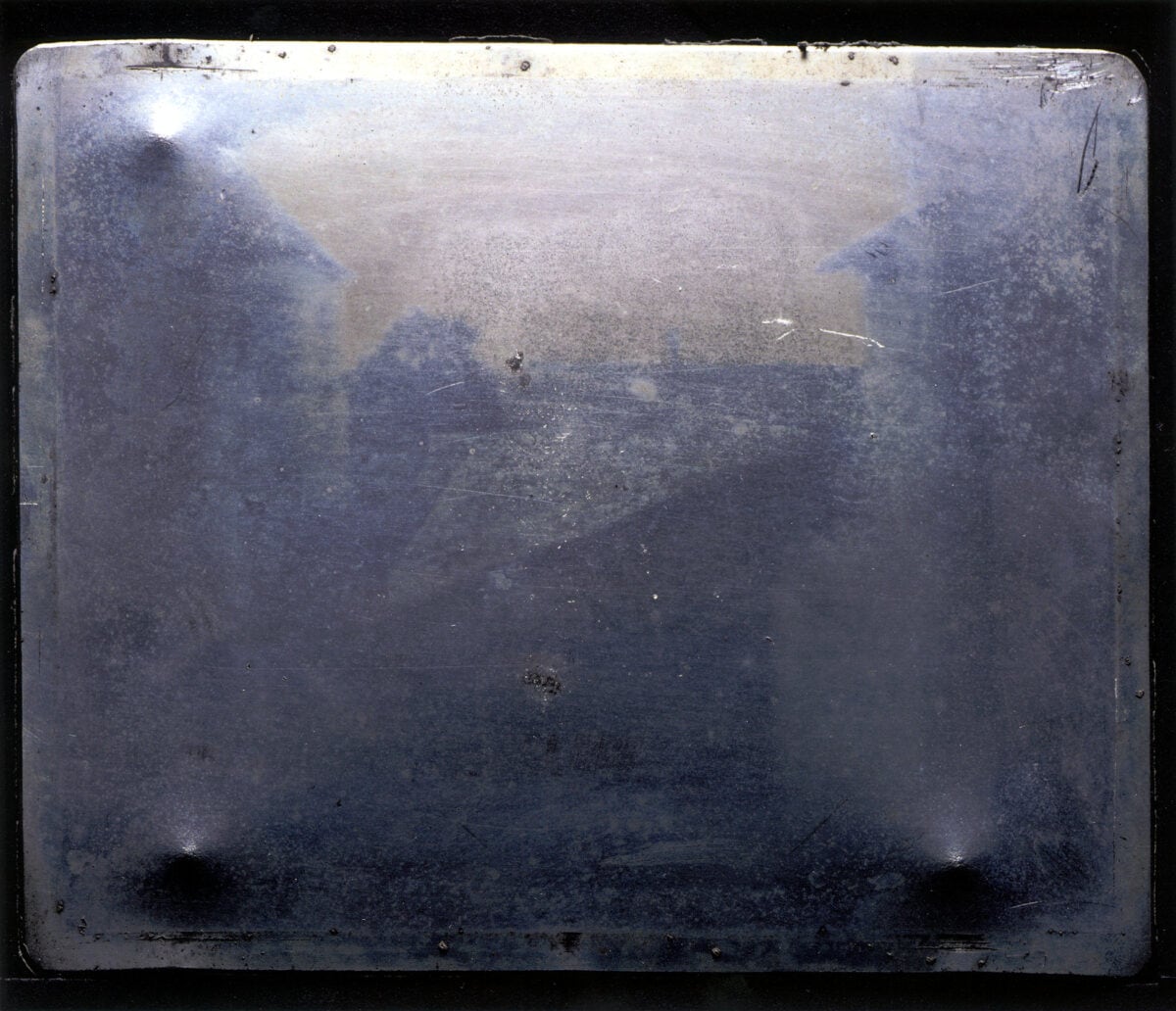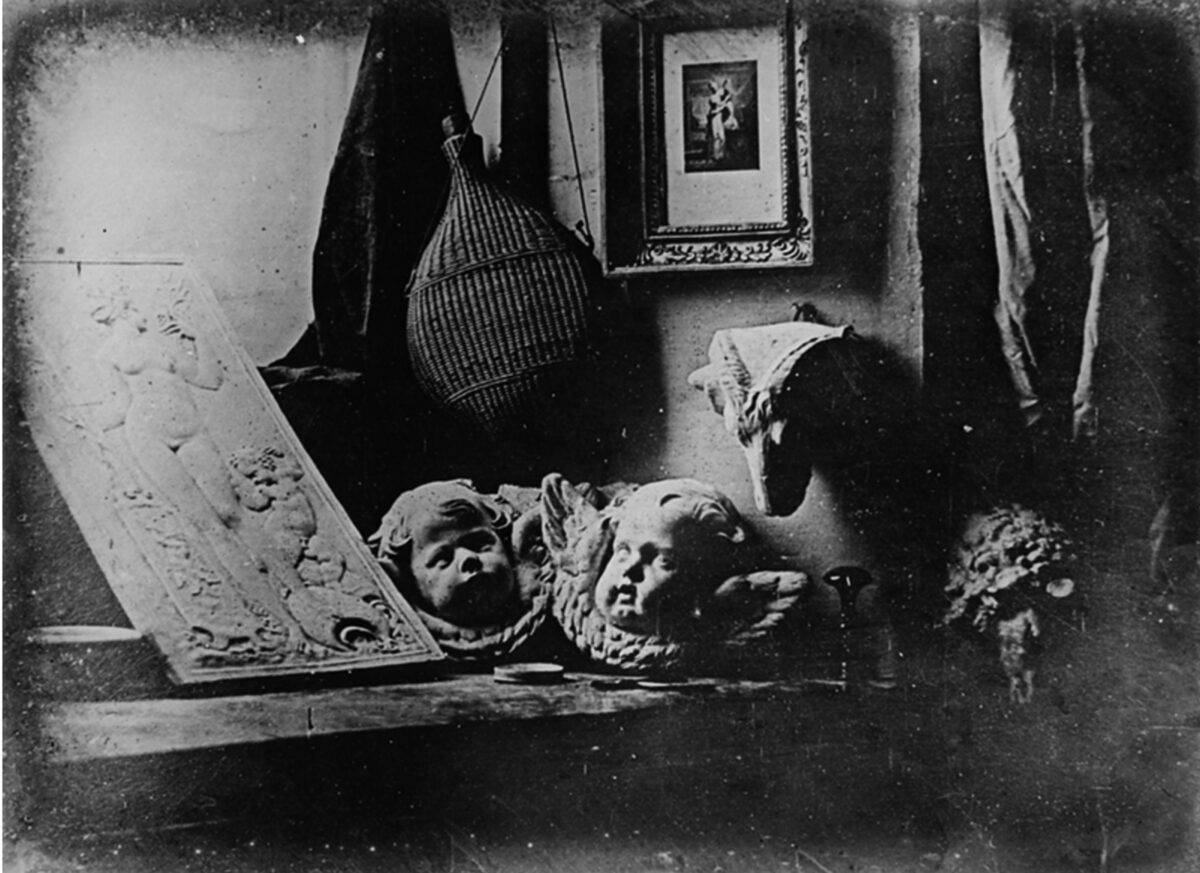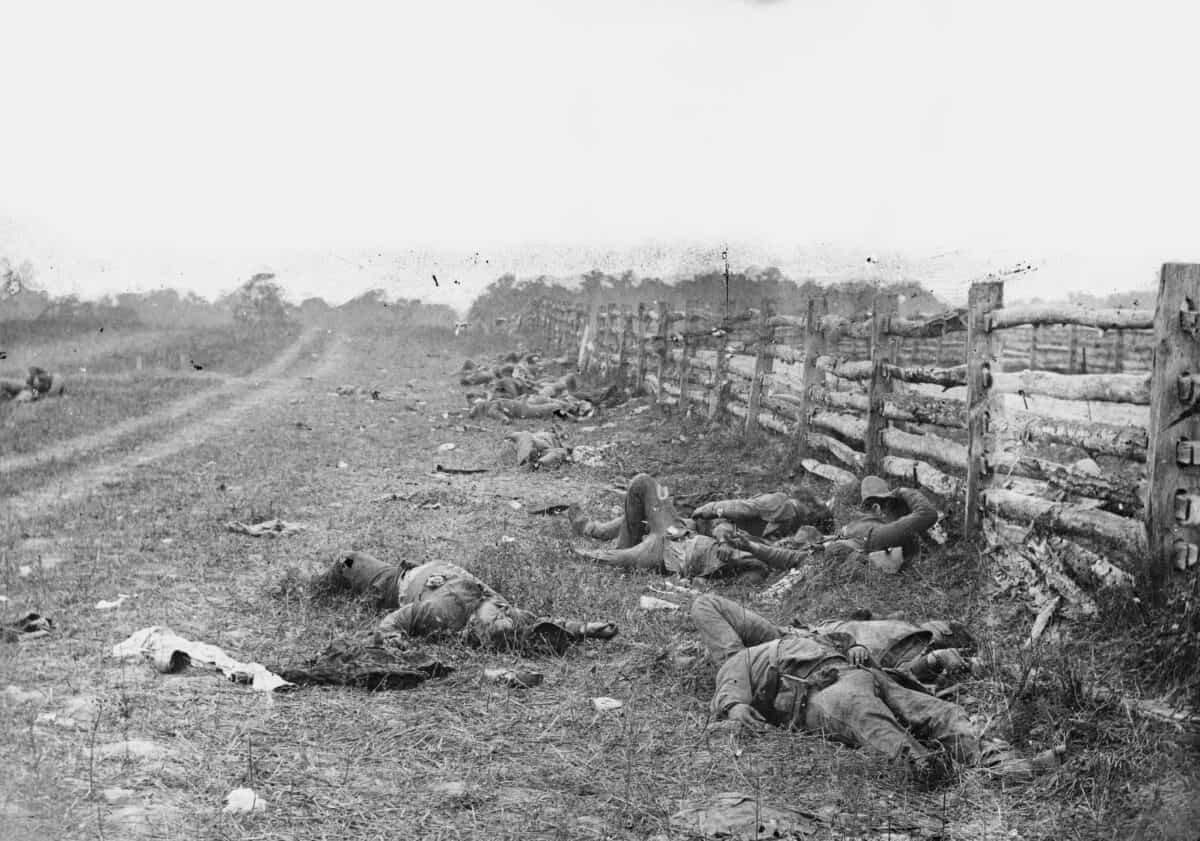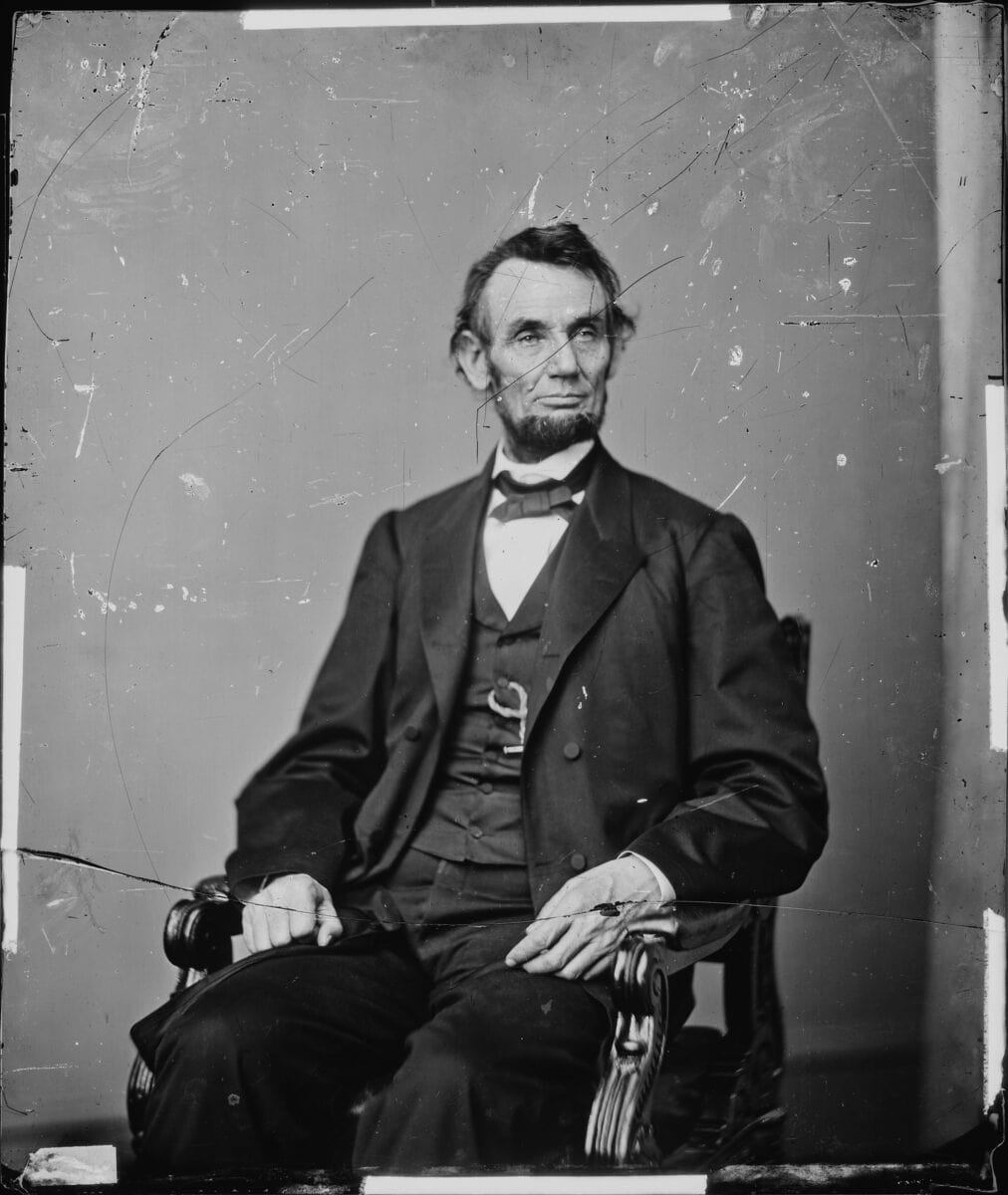Today, the convenience of capturing a photo is taken for granted. With a simple click, we can immortalize an image. In contrast, the very first photograph required an astounding amount of time — more than 8 hours — to come into existence.
Imagine the patience required as the light slowly etched an image onto light-sensitive material. While photographers had to select their subjects thoughtfully in those early days, we now effortlessly capture even the most ordinary things, like our breakfasts and the outfits we wear each day.
In this article, we’ll take a look at the oldest photos in history. These photos took time, effort, and a significant amount of expertise to produce, giving us a glimpse into the past. Let’s explore them!
View from the Window at Le Gras (1826)
View from the Window at Le Gras is the oldest surviving photo in the world.
Nicéphore Niépce (1765–1833), a French inventor born to a wealthy family in the Burgundy region of France, pioneered the process of capturing scenes with his camera through trial and error. Niépce achieved this remarkable feat by using a process called heliography.
Niépce began by coating a pewter plate with a light-sensitive material called bitumen, placing the plate inside a camera, and then exposing it to the scene for at least 8 hours. During this time, sunlight caused the bitumen on the plate to solidify in areas facing architectural elements like buildings. The sections that hadn’t solidified were removed through washing, resulting in the creation of this image.
While the photo lacks clear details, there is one wing of the house on the left, another wing of the house on the right, a barn in the middle, and a landscape scene in the background. Due to the long exposure time, the sun casts light on the house’s left and right wing.

Still Life in Studio (1837)
The techniques used for Still Life in Studio by Louis Daguerre are significantly more adept at capturing intricate details compared to the heliograph by Nicéphore Niépce.
Although Niépce and Louis Daguerre (another French inventor) worked together to develop a better photographic process, Niépce died before the process was completed. Once Daguerre completed it, he named the process the “daguerreotype.”
To create the image seen here, Daguerre coated a copper plate with silver iodide, placed it in a camera exposed the plate to light, then developed the image with mercury vapors.
Daguerre chose to capture a still life rather than a person because details could be seen more easily if the subject matter didn’t move.

Boulevard du Temple (1838)
View from Louis Daguerre’s Apartment (also known as Boulevard du Temple) is the oldest photo to feature a human.
Although there would be many individuals walking through this scene, the photograph captures only two people. This is because the prolonged exposure time prevented swiftly moving people and objects from being recorded. As a result, only the people and objects that remained stationary are visible in the image.
Located in the lower left-hand portion of the image, you might discern a scene where one man is getting his boots polished by another. Given the photograph’s 4 to 5-minute exposure time, we can deduce that the act of shining a pair of shoes required at least that much time.
The year after this photo was taken, Daguerre began promoting his invention publicly. Recognizing the significance of Daguerre’s invention, officials from the French government acquired the rights to the daguerreotype and made the process accessible to the public.

Self-Portrait of Robert Cornelius (1839)
Self-Portrait of Robert Cornelius holds the title of the first selfie in history.
Cornelius (1809-1893) was notably able to shorten the original daguerreotype’s exposure time from 25 minutes to less than 2 minutes by using an additional chemical in the process. As a result of this innovation, Cornelius established the first portrait studio in Philadelphia, Pennsylvania.
Louis Daguerre, the original inventor of the camera, was so impressed with Cornelius that he reportedly sent daguerreotypes from France in exchange for his work.

Portrait of John Quincy Adams (1843)
Portrait of John Quincy Adams is the oldest photo of a United States President.
Adams served as President from 1825 to 1829 and a member of the United States House of Representatives from 1943 until his death in 1948. During his time in Congress, he vocally advocated for the abolition of slavery despite a rule that prohibited anti-slavery discussions.
We know this portrait session took place in March 1843 because Adams wrote about it in his diary. He documented walking to Philip Haas’ residence at 9:00 AM, mentioning that the cold hurt his hands despite wearing gloves. Adams also noted that another Congressman, Horace Everett, posed for a portrait that day.
Interestingly, while Everett succeeded in obtaining a satisfactory portrait on the first attempt, Adams required three tries to achieve the same result.

Portrait of Abraham Lincoln (1846)
Nicholas H. Shepherd, a law student who worked in Abraham Lincoln’s office, created Portrait of Abraham Lincoln in 1846.
At that time, Lincoln was approximately 37 years old and had recently been elected to the House of Representatives. An intriguing aspect of this photograph is its retouching. According to Gibson William Harris, a law student who shared Lincoln’s office and lived with the photographer, someone altered the negative of the photo. The wart on Lincoln’s cheek was removed, and his wrinkles were smoothed out in the retouched version. As a result, Lincoln looked younger in the picture than he actually did.
When Lincoln had this portrait taken in 1846, he was just beginning to establish his political career. That year, citizens of Illinois’s 7th congressional district elected Lincoln as a U.S. Representative for the state. He would not become president until 1861.

Battle of Antietam (1862)
The photo above shows fallen Confederate soldiers in the aftermath of the Battle of Antietam, taken in September 1862.
The Battle of Antietam was one of the deadliest days in American history, causing around 23,000 casualties. During the American Civil War, photography extensively documented the realities of war. Newspapers and magazines featured these images to provide readers with a direct look at its consequences.
Before the advent of photography, news of this nature was conveyed through written accounts. While stating the number of casualties is one thing, the photo is far more impactful.

Portrait of Abraham Lincoln (1864)
If you’ve ever held a five-dollar bill in your hand, you might recognize this photo: Portrait of Abraham Lincoln.
Photographer Anthony Berger took this photo of Lincoln during his Presidency, which lasted from 1861 until his assassination in 1865. Although President Lincoln posed for many photographers, this particular image is significant because it was later used for the five-dollar bill.
Lincoln’s inclusion on the five-dollar bill honors his leadership during a pivotal time in American history. During his Presidency, he guided the nation through the Civil War and ultimately issued the Emancipation Proclamation, which paved the way for the abolition of slavery.

Up Next:
- The 6 Best Cameras for YouTube on Earth Today
- What Was Isaac Newton’s IQ? Was He the Smartest Person Ever?
- Discover the 6 Oldest Companies in History
The image featured at the top of this post is ©G-Stock Studio/Shutterstock.com.
